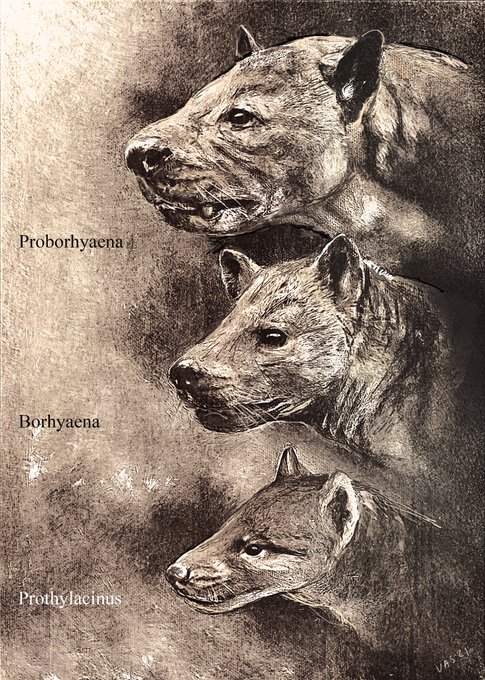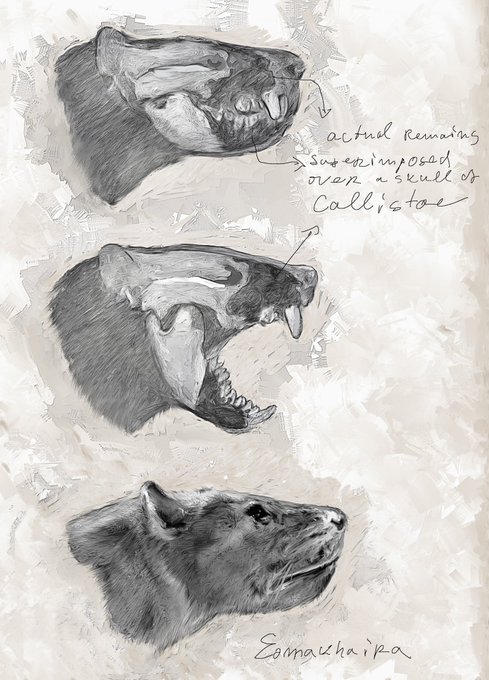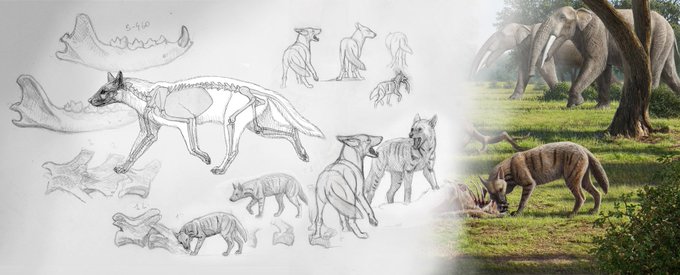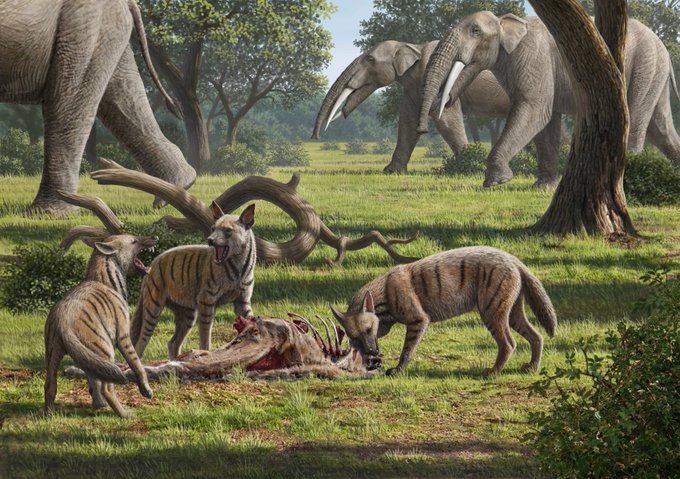hyaenidsのTwitterイラスト検索結果。 4 件
It has a full head-to-butt mane because that seems to be a feature of most Hyaenids from looking at aardwolves, brown hyenas and striped hyenas.
Timelapse!
1
6
Eomakhaira molossus - a new taxon which clarifies the origin of the Thylacosmilus and demonstrates its relation to Proborhyaenids.
https://t.co/8BLMkWCcYw
42
242
Earliest #hyaenids were different from modern, huge bone-crackers like Crocuta. Protictitherium, from the Miocene of Batallones, was no larger than a jackal and had a varied diet including carrion. From fossils to sketches to full reconstruction #fossilfriday
62
170
もし、気にっていただけましたらTwitterやブログで宣伝していただけると管理人が喜びます。
ツイートする








